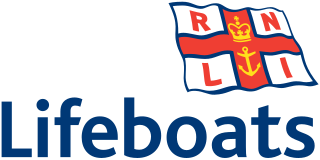
The Royal National Lifeboat Institution (RNLI) is the largest of the lifeboat services operating around the coasts of the United Kingdom, the Republic of Ireland, the Channel Islands, and the Isle of Man, as well as on some inland waterways.

Arklow is a town in County Wicklow on the southeast coast of Ireland. The town is overlooked by Ballymoyle Hill. It was founded by the Vikings in the ninth century. Arklow was the site of one of the bloodiest battles of the 1798 rebellion. Its proximity to Dublin led to it becoming a commuter town with a population of 13,163 as of the 2016 census. The 2022 census recorded a population of 13,399.

A ghost ship, also known as a phantom ship, is a vessel with no living crew aboard; it may be a fictional ghostly vessel, such as the Flying Dutchman, or a physical derelict found adrift with its crew missing or dead, like the Mary Celeste. The term is sometimes used for ships that have been decommissioned but not yet scrapped, as well as drifting boats that have been found after breaking loose of their ropes and being carried away by the wind or the waves.

Courtmacsherry, often referred to by locals as Courtmac, is a seaside village in County Cork, on the southwest coast of Ireland. It is about 30 miles southwest of Cork, and 15–20 minutes drive east from the town of Clonakilty. The village consists of a single long street on the southern shore of Courtmacsherry Bay, with thick woods on rising ground behind. The woods continue beyond the village eastwards to the open sea, ending at Wood Point. Between the village and "The Point" the trees run right to the water's edge and there are several natural bathing coves along the way.

SS Nomadic is a former tender of the White Star Line, launched on 25 April 1911 at Belfast, that is now on display in Belfast's Titanic Quarter. She was built to transfer passengers and mail to and from the ocean liners RMS Olympic and RMS Titanic. She is the only surviving vessel designed by Thomas Andrews, who also helped design those two ocean liners, and the last White Star Line vessel in existence today.

The Cobh Heritage Centre is a museum located in Cobh, County Cork, Ireland. It is attached to Cobh railway station.
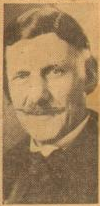
Ian Holbourn, born John Bernard Stoughton Holbourn, was Laird of Foula, a professor and lecturer for the University of Oxford, and a writer.
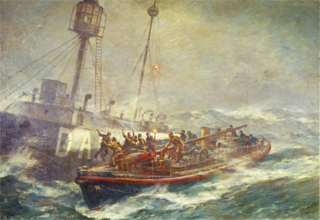
RNLB Mary Stanford was the Ballycotton Lifeboat from 1930 to 1959. Ballycotton is on Ireland's southern coast, a trade route to the Americas. There are many dangerous rocks and shallows with on-shore prevailing winds. Ballycotton has a long tradition of life-saving. Mary Stanford had 41 rescues, or "shouts", and saved 122 lives. She performed the notable Daunt Lightship rescue on 11 February 1936. After her withdrawal from service she lay for some years in a backwater of Dublin's Grand Canal Dock, but has now been returned to Ballycotton and restored.
Tyrronall was a 248 GRT Coaster that was built in 1935 as the 199 GRT schooner Heimat by Flender Werke AG, Lübeck, Germany for German owners. She was seized by the Allies in May 1945, passed to the Ministry of War Transport (MoWT) and was renamed Empire Contamar.

Cymric was a British and Irish schooner, built in 1893. She joined the South American trade in the fleet of Arklow, Ireland, in 1906. She served as a British Q-ship during the First World War; she failed to sink any German U-boats, but did sink a British submarine in error.

James Postlethwaite was a schooner, launched in 1881. She operated out of Arklow after 1909. She was in Hamburg on the day that Britain entered the First World War with its declaration of war against Germany. Her crew was imprisoned and she was impounded and used as a barge to carry munitions.

The Mary B Mitchell was a British and later an Irish schooner, affectionately known as Mary B.. She was a pleasure craft, a war hero, a working schooner, a film star and a transporter of essential cargoes in dangerous waters.

The RMS Lusitania was a British-registered ocean liner that was torpedoed by an Imperial German Navy U-boat during the First World War on 7 May 1915, about 11 nautical miles off the Old Head of Kinsale, Ireland. The attack took place in the declared maritime war-zone around the UK, shortly after unrestricted submarine warfare against the ships of the United Kingdom had been announced by Germany following the Allied powers' implementation of a naval blockade against it and the other Central Powers. The passengers had been warned before departing New York of the danger of voyaging into the area in a British ship.

RNLB Duncan was the first RNLI lifeboat placed on station in the English coastal town of Sheringham in the county of Norfolk, United Kingdom. The arrival of this lifeboat also coincided with the construction of the first RNLI lifeboat station. The station and boat worked in conjunction with the already established private Fishermans lifeboat station also in the town.

RNLB Alfred Corry is a Norfolk and Suffolk-class, non-self-righting, sailing and rowing lifeboat which served in the town of Southwold in the county of Suffolk. The boat was funded and crewed by the Royal National Lifeboat Institution (RNLI). She is kept on display in a museum in Southwold.
Alondra was an English steamer owned by Yeoward Bros. Ltd. out of Liverpool. She sank on 29 December 1916, in the North Atlantic after running aground at Kedge Rock in Baltimore, County Cork, Ireland. Seventeen men of the crew died while the remaining 23 were rescued.

Eastbourne Lifeboat Station is a Royal National Lifeboat Institution (RNLI) lifeboat station in the town of Eastbourne in East Sussex. Founded two years before the RNLI was established, the station has operated continuously since 1822 and its lifeboats have been responsible for saving over 700 lives. There are two active lifeboat stations in Eastbourne, an all-weather station with the Trent-class 14-02 Esme Anderson at Sovereign Harbour and the D-class (IB1) The David H (D-876) at the inshore lifeboat station a couple of miles to the west at Fisherman's Green. An older lifeboat station, west of Eastbourne Pier, is now used as an RNLI museum.

Clovelly Lifeboat Station, serving the North Devon village of Clovelly and surrounding coastal waters, is run by the Royal National Lifeboat Institution (RNLI). It was established in 1870. The station is flanked by Appledore to the northeast and Bude to the southwest.
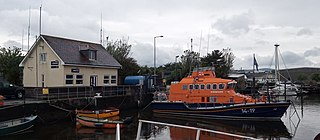
Arklow Lifeboat Station is a RNLI lifeboat station located in the coastal town of Arklow, County Wicklow on the east coast of Ireland. It was established in 1826, making it the oldest lifeboat station in Ireland.
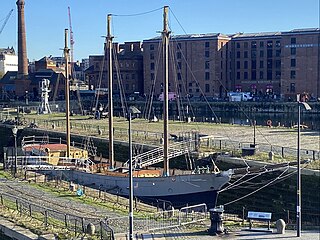
De Wadden was a steel-hulled, three-masted auxiliary schooner that was built in 1917 by Gebroeders Van Diepen of Waterhuizen, Netherlands. She and her two sister ships, De Lauwers and De Dollart, were ordered by the Nederlandsche Stoomvaart Maatschappij in order to take advantage of the unique trading conditions the Dutch had during the First World War due to their neutrality. She spent most of her life as an Irish Sea Trading Vessel and was preserved as a museum ship in Liverpool, England from 1984, until her scrapping in 2024.




















